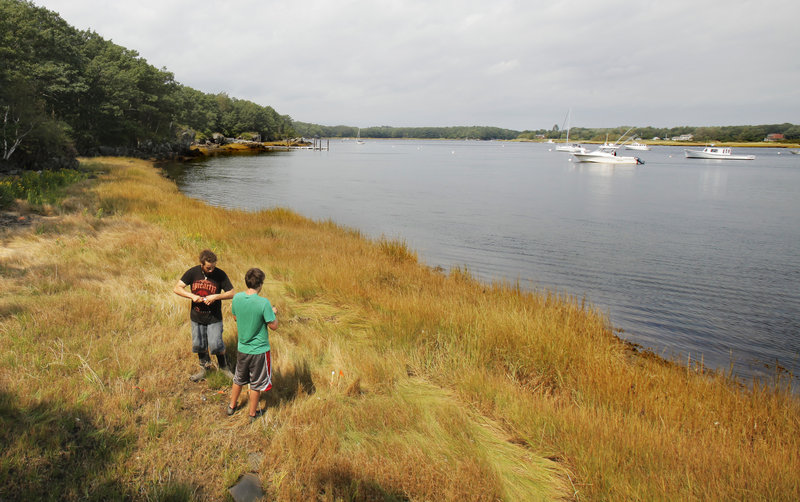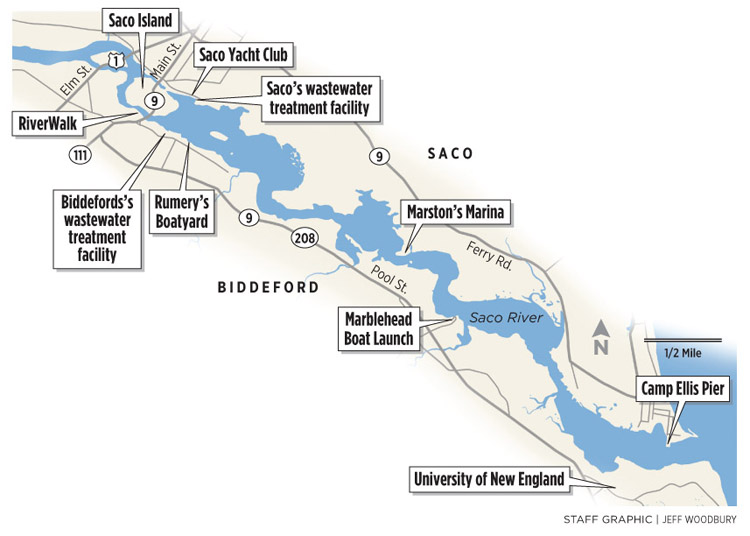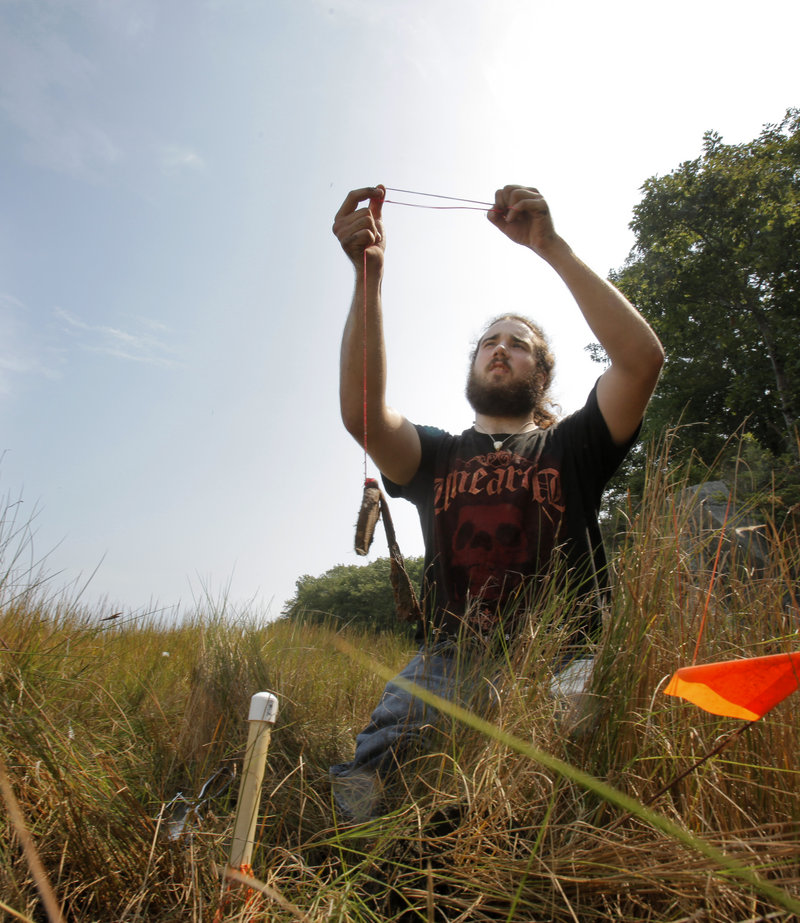BIDDEFORD – The Saco River is considered a gem by many in Biddeford and Saco.
Residents pride themselves on riverfront property, fishermen run their businesses from the river, tourists venture out on kayaks and charter tours, and the two cities are creating river walks that will improve access to the resource.
In the past three decades, there has been a concerted effort to clean up the river. Once polluted by waste water, tanneries and trash, the river is now fit for swimming, boating and recreational and commercial fishing. There has even been a resurgence of fish species, like sturgeon, that haven’t been seen in the river for years.
As development continues along the river, it has become even more important to keep it healthy to support its economic value. To help do that, a group of University of New England professors and students is studying a five-mile stretch of river from the mills down to the ocean. The research project is taking a look at the health of the habitat as well as the economic impact on the people who visit, work and live on the river. The project is funded by a two-year, $100,000 National Science Foundation grant.
Once a source of power for textile mills, the Saco River is now an asset for developers as they renovate vacant mill buildings, and for Biddeford and Saco as they construct walkways along its banks.
Will Almeida, who graduated from UNE in May with a degree in environmental studies, is one researcher studying the ecological health of the estuary. On Thursday, he and UNE senior Cory French started on university property near the mouth of the river and collected resin bags — small pieces of PVC pipe filled with a gravel-like substance that absorbs nitrogen.
They traveled up and down the river on the overcast day, collecting three bags at each of 10 sites, half on the Biddeford side of the river and half on the Saco side.
The samples will help determine how much nitrogen is available in soil along the river and how suitable it is for plant growth.
Students researching the economics of the river are spending their time interviewing residents, business owners, local organizations and city officials about what the river means to them and what role they play in keeping it healthy, said team member Mike D’Apice, a UNE senior.
“It’s to gain more knowledge about mutual benefits for these stakeholders, because if you have an unhealthy river, your business is going to suffer,” he said.
That’s a reality that Gary Marston, owner of Marston’s Marina in Saco, is keenly aware of. He remembers when fishing and swimming in the river weren’t popular because of the pollution. Since the river has been cleaned up, he has not only seen a return of fish and increased interest in fishing, but also a return of bird life.
“The goal is we’ve got to live together with all aspects of life,” Marston said. “One thing supports another. There’s a certain balance, and we’ve got much more of that today than we did some years ago.”
Long before Biddeford and Saco were settled, the river was used to send logs from inland areas to the ocean. The river was then seen as a commodity and power source for industrial mills during the mid-1800s as downtown Biddeford and Saco began to develop. Many of the mills closed in the 1950s, and while industry plays a lesser role on the Saco today, the river is still considered an important economic resource.
City Planner Greg Tansley said Biddeford recently created a downtown master plan that takes into consideration the vision for a river walk.
“(The plan) saw the river itself as a resource that could be harnessed to create a destination in both downtowns,” he said. “It was certainly depended upon for early economic development, and the thought is now that it could be recaptured as another economic development tool.”
Saco City Planner Bob Hamblen said the river is an integral part of the community.
“Learning more about the flora, fauna, ecology and economic impacts of the Saco River is a real value-added exercise that UNE is offering us,” he said.
Hamblen hopes that results from the university’s research will help in planning and promote the understanding that the river needs to be respected and treated well.
Pam Morgan, associate professor in UNE’s Department of Environmental Studies, said the research team is seeking another $100,000 grant for a third year and hopes to fund the project for five years.
The university has been holding workshops and informational boat rides to brief city officials, local residents and businesspeople about the project. The research team is working to create a publication about the findings that may be available by next summer. An economics team, working with Michael Daley, associate professor of economics at UNE, is creating a website where people can hear the interviews with townspeople and view an interactive map of the study area.
“This process is interdisciplinary,” Daley said. “We’re hopeful this network will help sustain a long-term view and long-term interaction to protect and make better the estuary.”
“Our overall goal is to create a small community and connect these stakeholders to show … that they’re all doing their part to keep the Saco River healthy,” said D’Apice, the UNE senior.
Staff Writer Emma Bouthillette can be contacted at 791-6325 or at:
ebouthillette@pressherald.com
Send questions/comments to the editors.





Success. Please wait for the page to reload. If the page does not reload within 5 seconds, please refresh the page.
Enter your email and password to access comments.
Hi, to comment on stories you must . This profile is in addition to your subscription and website login.
Already have a commenting profile? .
Invalid username/password.
Please check your email to confirm and complete your registration.
Only subscribers are eligible to post comments. Please subscribe or login first for digital access. Here’s why.
Use the form below to reset your password. When you've submitted your account email, we will send an email with a reset code.